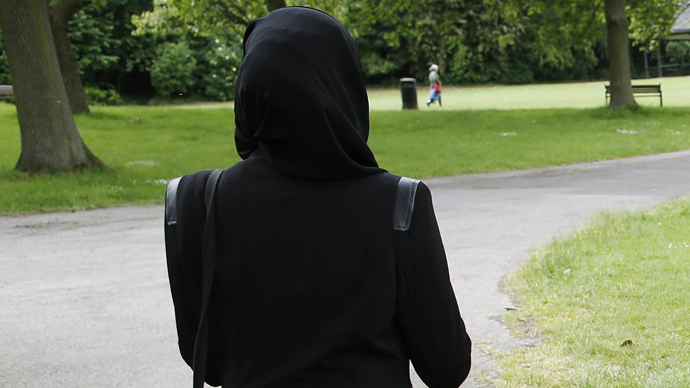QUESTION:
What do the scholars of the Din and muftis of the Sacred Law state regarding the following issue, that is it permissible for a Muslim to wear a tie for work or an interview because some companies make it a condition that one has to wear one. What is the ruling for wearing a tie? Some books mention that it is impermissible however an overwhelming number of Muslims wear it so are they all doing something impermissible?
Questioner: Awais from UK
ANSWER:
بسم اللہ الرحمن الرحیم
الجواب بعون الملک الوھاب اللھم ھدایۃ الحق والصواب
To wear a tie nowadays is permissible. Wearing a tie is no longer a specifically religious symbol of Christians, rather it is used by both non-Muslims and Muslims and there are a certain number of Muslims who do wear one as well as it being a part of the uniform for several Muslim institutes. Thus, wearing a tie nowadays does not mean one is imitating non-Muslims, nor does any Muslim wear a tie with such intention either, because only that resemblance of non-Muslims which is prohibited and impermissible is that which is either with the intention of imitating them, that being a specific sign or symbol of theirs or performing that action which is prohibited in terms of sharī’ah.
Just as Sayyidī Alā Hazrat Imām Ahmad Ridā Khān, may Allāh have mercy upon him, states, “It has become clear from this research that only that resemblance is prohibited and makrooh in which the person doing so has the intention of imitation, or that matter is a specific sign of the misguided, or it has an issue in itself that it is prohibited by shari’ah. Unless they are from any of these types, there is no reason for it being prohibited at all.”
[Fatāwā Ridawiyyah, Vol. 24, Pg 535]
None of these reasons are intended when wearing a tie; meaning it is not a person’s intention to imitate non-Muslims when wearing a tie, nor does wearing a tie any longer remain a specific sign of them nor is it prohibited due to a reason in terms of sharī’ah, thus there is no harm in wearing such. However, it is still better to avoid doing so as even nowadays it is not an act of respectable people. In some books where it is written as impermissible, this is limited to during that era when it was a specific symbol of non-Muslims, for example, when wearing a tie used to be a specific symbol of Christians. Now it is no longer the case, therefore it will no longer have the same ruling either because it is necessary for an action being a sign of a particular nation for that action to be recognised for that specific nation, and that not being found in any other nation other than the original one. If it is found in various other nations and it is not a specific sign from which that particular nation is recognised, then that action cannot be a symbol of that nation.
Just as Sayyidī Alā Hazrat Imām Ahmad Ridā Khān states, “Nevertheless, the ascertaining of this (resemblance) is when it is unequivocally a specific symbol of theirs in that area and time period from which they are recognised and it is not found in others except them, otherwise what place is there for (this) being necessary [meaning, if it is a symbol of one nation alongside other nations, then it cannot be necessary claimed that it is a specific symbol of that one nation; it may be or it may be not]. Yes, if that matter itself is objectionable in the eyes of sharī’ah then due to this reason, it will remain to be prohibited or makrooh, not due to the reason of resemblance.”
[Fatāwā Ridawiyyah, Vol. 24, Pg. 532]
This can be further understood as such, that there was once an era in which wearing a ring on the right hand was a sign of the Rawāfid [a Shia sect], thus the scholars prohibited the wearing of a ring on the right hand in order to save oneself from resembling the Rawāfid. However, now it is totally permissible to wear a ring on the right hand as it is no longer a sign of theirs.
Just as it is stated in Durr Mukhtār ma’ Radd al-Muhtār,
“وَقِيلَ الْيُمْنَى إلَّا أَنَّهُ مِنْ شِعَارِ الرَّوَافِضِ فَيَجِبُ التَّحَرُّزُ عَنْهُ”
“It was said that it is a sign of only the Rawāfid thus it is wājib to avoid this.”
‘Allāmah Shāmī writes under this saying,
“كَانَ ذَلِكَ مِنْ شِعَارِهِمْ فِي الزَّمَنِ السَّابِقِ، ثُمَّ انْفَصَلَ وَانْقَطَعَ فِي هَذِهِ الْأَزْمَانِ، فَلَا يُنْهَى عَنْهُ كَيْفَمَا كَانَ”
“Wearing a ring on the right hand used to be a sign of theirs, then it became disassociated from them and in this era it finished being a sign of theirs, thus now one will not be prohibited from such, whatever the case may be.”
[Durr Mukhtār ma’ Radd al-Muhtār, Fasl fī al-Lubs, Vol. 6, Pg. 361, Dār al-Kutub al-‘Ilmiyyah]
واللہ تعالی اعلم ورسولہ اعلم صلی اللہ علیہ وآلہ وسلم
کتبہ ابو الحسن محمد قاسم ضیاء قادری
Answered by Mufti Qasim Zia al-Qadri
Translated by Haider Ali
Read the original Urdu answer here: [Q-ID0519] What is the Islamic ruling on wearing a tie?





























![[Q-ID0174] Becoming a make-up artist, is wearing makeup allowed?](http://www.seekerspath.co.uk/wp-content/themes/hueman-pro/assets/front/img/thumb-medium-empty.png.pagespeed.ce.q0RS_Oe2Ar.png)




















